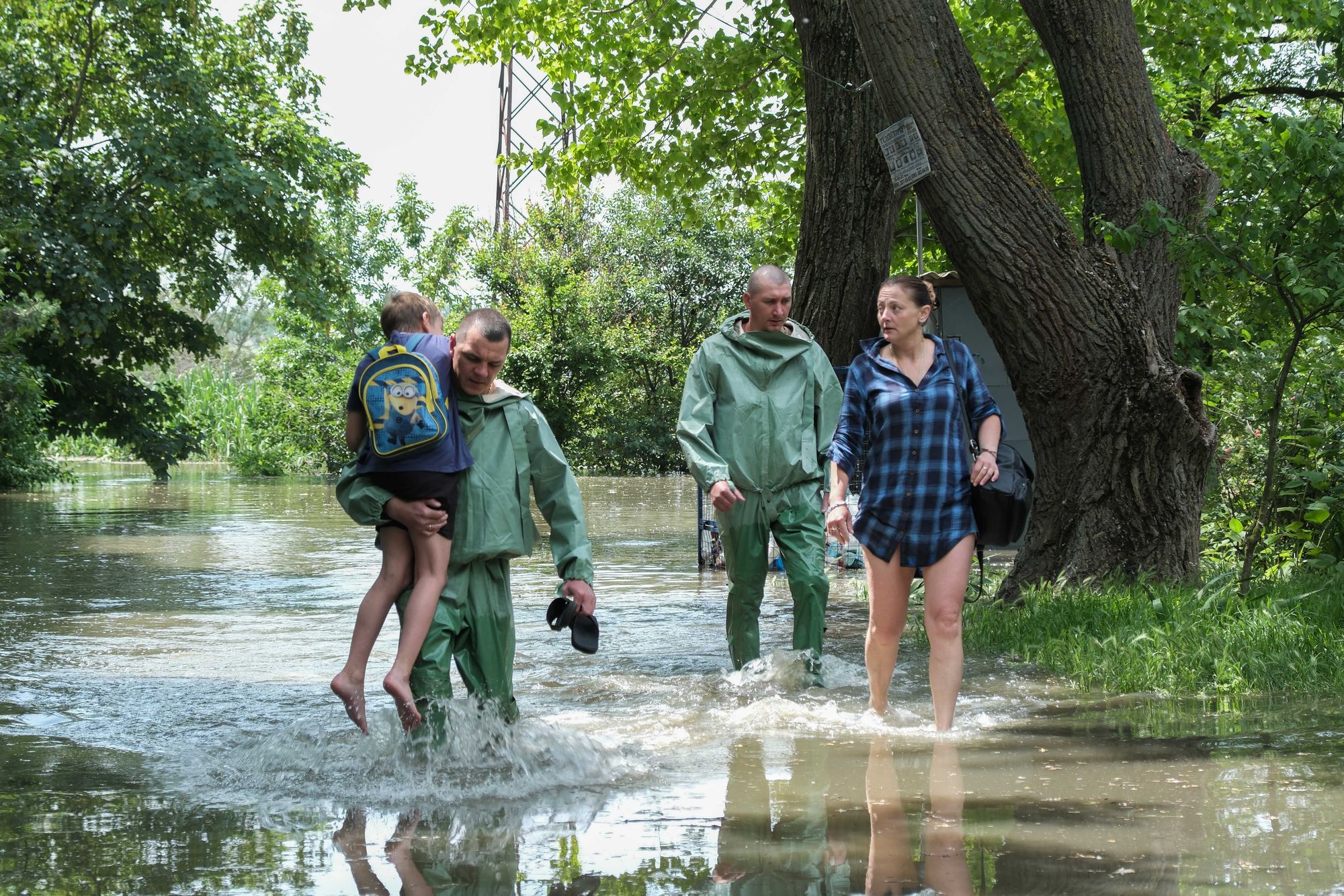Border guards: Mines dislodged by Kakhovka dam flooding end up in Odesa Oblast.
The flooding caused by the destruction of the Kakhovka dam in Kherson Oblast has led to an increased threat of dislodged mines being carried to the shores of Odesa Oblast, the State Border Guard Service reported[1] on June 12. Kherson and Odesa oblasts are separated by over 200 kilometers, but the State Border Guard Service previously reported[2] on June 10 that the Black Sea was becoming a "garbage dump (of household debris) and an animal cemetery" because of the flooding. The Kakhovka dam collapsed early on June 6, resulting in a mass-scale humanitarian and ecological disaster in Kherson Oblast and other parts of southern Ukraine.
Ukrainian authorities say the dam was blown up by Russian forces to prevent a Ukrainian counter-offensive. According to the State Border Guard Service, the mines dislodged from the soil by flood waters are "not as visible" as sea-based mines, making them a significant threat. Currently, there are "a large number" of mines drifting into the Black Sea via the current.
"Within seven days, border guards, along with other Defense Forces, have discovered six mines of different modifications that were washed up on the shores of Odessa due to the turbulent flood. Most of the explosive items were destroyed through controlled detonation," the State Border Guard Service wrote. Mines exploding after colliding with other objects in the water have also been observed, according to the State Border Guard Service.
Saving lives from Russia's flood: Inside inundated, shelled Kherson
Since Russia's full-scale war began, first came eight months of terror under occupation, then came seven months of intense shelling across the river, then came the river itself to Kherson. Over 24 hours after Russian forces destroyed the Kakhovka Hydroelectric Power Plant and its massive...
 [3]
[3]  Kate Tsurkan
Kate Tsurkan
News editor
Kate Tsurkan is a news editor at the Kyiv Independent. She is a writer, editor, and translator.
Her work has been published in The New Yorker, Vanity Fair, Harpers, The Washington Post, and elsewhere. She is the co-founder of Apofenie Magazine. Originally from the U.S., she resides in Chernivtsi, a city in the west of Ukraine.
References
- ^ reported (dpsu.gov.ua)
- ^ reported (kyivindependent.com)
- ^ Saving lives from Russia's flood: Inside inundated, shelled KhersonSince Russia's full-scale war began, first came eight months of terror under occupation, then came seven months of intense shelling across the river, then came the river itself to Kherson.
Over 24 hours after Russian forces destroyed the Kakhovka Hydroelectric Power Plant and its massive...
(kyivindependent.com)